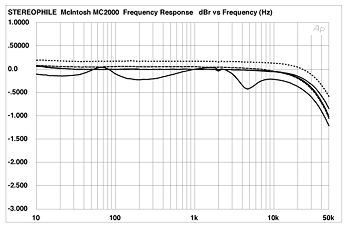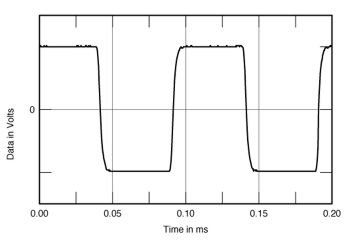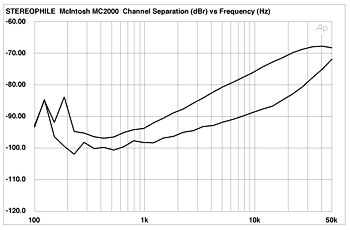| Columns Retired Columns & Blogs |
McIntosh Labs MC2000 power amplifier Measurements
Sidebar 3: Measurements
Unless otherwise noted, the measurements given are for balanced operation. Also, unless noted otherwise, 8 ohm measurements were made from the 8 ohm output terminal, 4 ohm measurements from the 4 ohm terminal, and 2 ohm measurements from the 2 ohm terminal.
Due to a mix-up in returning the MC2000's tubes to their storage box after the photo shoot for this issue's cover—which preceded the taking of these measurements—it's possible that one or more tubes were not correctly placed in their specified locations during this testing. In theory, at least, this would affect the measurements. However, the bias was checked for the right channel and was spot-on. The left-channel bias could not be checked because the head of one of the screws holding the bias cover in place stripped when we attempted to loosen it. Nevertheless, both channels measured nearly the same, though with slightly higher distortion in the left channel. Unless noted otherwise, measurements performed on one channel only were taken from the left channel—our standard practice.
After a one-hour pretest, the MC2000 was typically hot for a tube amplifier. Its input impedance measured 19.8k ohms single-ended (unbalanced) and 42.6k ohms balanced. Single-ended voltage gain into 8 ohms was 28.5dB; balanced was 23.1dB. The output impedance measured a maximum of 0.4 ohm—quite high in comparison with solid-state amplifiers but admirably low for a tube amp.
DC offset measured a maximum of 6.1mV in the left channel, 11.1mV in the right. (The measured offset varied considerably, due to the presence of infrasonic noise, but the values above were the maximum noted. The signal/noise ratio (ref. 1W into 8 ohms) measured 79.5dB over a 22Hz-22kHz bandwidth, 73dB from 10Hz to 500kHz, and 86dB A-weighted. The corresponding single-ended values were 79.2dB, 73dB, and 88.5dB, respectively. The MC2000 is noninverting in single-ended mode, and pin 3 is positive in balanced operation. (Pin-2 positive is more common in the US, but pin-3 positive is typical in Japan, where I suspect most MC2000s will be sold.)
Fig.1 shows the MC2000's balanced frequency response. (The unbalanced response is essentially identical.) Note that the response into a simulated load is relatively flat for a tube amplifier: approximately ±0.25dB over the audible range. The 10kHz squarewave response in fig.2 is very good, with only a slight rounding of the leading edge, and a small amount of ripple nearly invisible in the plot shown. (It's more visible when viewed directly on an analog oscilloscope, but still very hard to spot.) The 1kHz squarewave, not shown, is nearly textbook-perfect.

Fig.1 McIntosh MC2000, balanced, frequency response at (from top to bottom at 6kHz): 2W into 4 ohms, 1W into 8 ohms, and 2.828V into simulated loudspeaker load, (0.5dB/vertical div.).

Fig.2 McIntosh MC2000, small-signal 10kHz squarewave into 8 ohms.
Channel separation (fig.3) is very respectable: better in the R-L direction, particularly at higher frequencies, but, even in the worst case, better than 65dB—a figure unlikely to result in any audible compromise in performance.

Fig.3 McIntosh MC2000, channel separation: L-R (top) and R-L (10dB/vertical div.).
- Log in or register to post comments



































